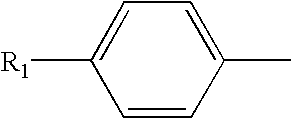Process for preparing aqueous fluoropolymer dispersions and the concentrated aqueous fluoropolymer dispersions produced by such process
- Summary
- Abstract
- Description
- Claims
- Application Information
AI Technical Summary
Benefits of technology
Problems solved by technology
Method used
Image
Examples
example 1
[0070] Four samples of PTFE dispersions containing 19.3 wt. % of PTFE, 754 ppm of APFO (3907 ppm of APFO based on the weight of PTFE), and having a pH of 3.5 were processed as follows: [0071] 1. The raw latex was stabilized with 18 wt. % of Triton X-100. 0.1 wt. % of NH4OH (30 wt. % aqueous solution) was added to adjust the pH. [0072] 2. It was then transferred into a lab Thermal Concentrator, which was connected to a circulating temperature control bath with maximum temperature set at 83° C. [0073] 3. The dispersion was slowly heated up from room temperature with no agitation. [0074] 4. Heating continued until temperature reached about 75° C. [0075] 5. The temperature was maintained between 75 and 80° C. until phase separation was complete. [0076] 6. The concentrated latex contained 66.9 wt. % of PTFE, 2.6 wt. % Triton X-100 and 450 ppm of APFO (673 ppm of APFO based on the weight of PTFE). The APFO reduction from 3907 to 450 ppm (based on PTFE) was 83% after one cycle of thermal c...
example 2
[0083] An aqueous dispersion of PTFE with trace commoner PPVE containing 18.8 wt. % by weight of modified PTFE, 210 ppm of APFO (1117 ppm of APFO based on the weight of PTFE), and having a pH of 3.5 was processed as follows: [0084] 1. The raw latex was stabilized with 18 wt. % of Newcol 1308 FA(90). NH4OH (30 wt. % aqueous solution) was added to adjust the pH. [0085] 2. It was then transferred into a lab Thermal Concentrator, which was connected to a circulating temperature control bath with maximum temperature set at 54° C. [0086] 3. The dispersion was slowly heated up from room temperature with no agitation. [0087] 4. Heating continued until temperature reached about 50° C. [0088] 5. The temperature was maintained between 50 and 52° C. until phase separation was complete. [0089] 6. The concentrated latex contained 64.3 wt. % PTFE, 3.1 wt. % Newcol 1308 FA(90) and 188 ppm of APFO (292 ppm of APFO based on the weight of PTFE). [0090] 7. The supernatant was drained into a separate co...
example 3
[0093] An aqueous dispersion of PTFE with trace commoner PPVE containing 20.5 wt. % by weight of modified PTFE, 66 ppm of APFO (322 ppm of APFO based on the weight of PTFE), and having a pH of 3.5 was processed as follows: [0094] 1. The raw latex was stabilized with 18 wt. % of Triton X-100. 0.25 ml of NH4OH (30 wt. % aqueous solution) was added to adjust the pH. [0095] 2. It was then transferred into a lab Thermal Concentrator, which was connected to a circulating temperature control bath with maximum temperature set at 80° C. [0096] 3. The dispersion was slowly heated up from room temperature with no agitation. [0097] 4. Heating continued until temperature reached about 72° C. [0098] 5. The temperature was maintained between 70 and 75° C. until phase separation was complete. [0099] 6. The concentrated latex contained 71.8 wt. % PTFE, 4 wt. % Triton X-100 and 108 ppm of APFO (150 ppm of APFO by weight of PTFE). [0100] 7. The supematant was drained into a separate container for futu...
PUM
| Property | Measurement | Unit |
|---|---|---|
| Temperature | aaaaa | aaaaa |
| Fraction | aaaaa | aaaaa |
| Fraction | aaaaa | aaaaa |
Abstract
Description
Claims
Application Information
 Login to View More
Login to View More - R&D
- Intellectual Property
- Life Sciences
- Materials
- Tech Scout
- Unparalleled Data Quality
- Higher Quality Content
- 60% Fewer Hallucinations
Browse by: Latest US Patents, China's latest patents, Technical Efficacy Thesaurus, Application Domain, Technology Topic, Popular Technical Reports.
© 2025 PatSnap. All rights reserved.Legal|Privacy policy|Modern Slavery Act Transparency Statement|Sitemap|About US| Contact US: help@patsnap.com

